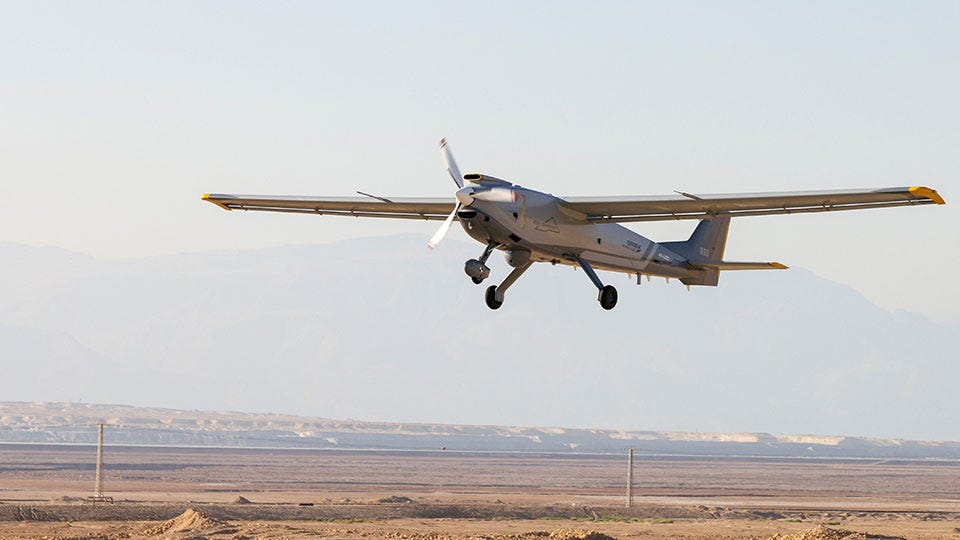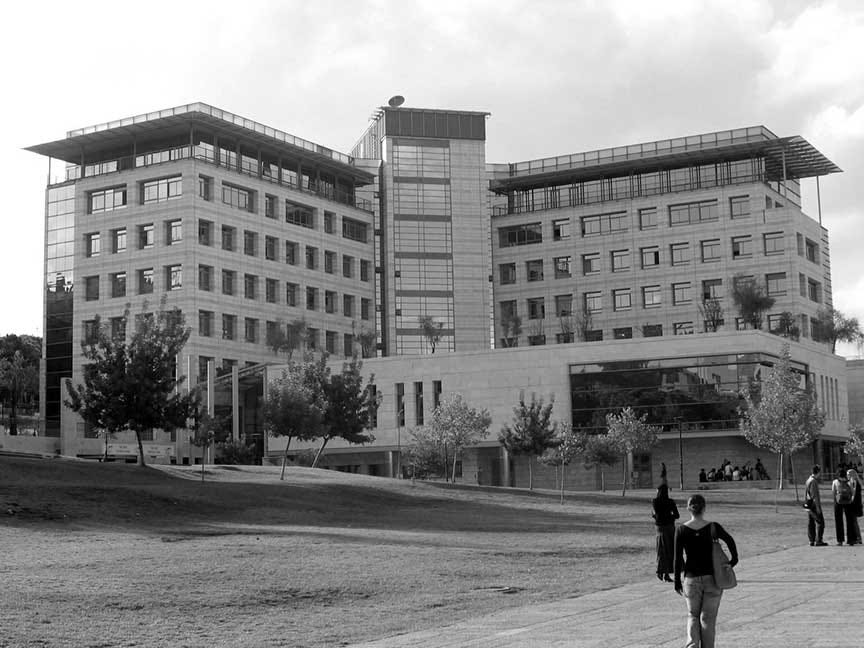DAY 141 OF THE GAZA WAR: Progress in Hostage Negotiations, Combat in Gaza and Northern Border, Houthis Attacked, Demonstrations in Tel Aviv
Tel Aviv Diary, February 24, 2024
HOSTAGES
The Israeli negotiating team has returned from Paris, signaling that substantial progress has been achieved in the negotiations. Reports suggest that the deal currently under discussion includes the release of approximately 40 elderly and ill hostages, along with a six week ceasefire. Israel consented to release a larger number of terrorists in exchange for the hostages than initially agreed upon, and resolved that an even larger number would be let go in exchange for the women soldiers.
Additionally, Israel agreed to provide further humanitarian aid. The exact number of residents permitted to return to Northern Gaza as part of the agreement remains uncertain. Israel did not agree to ending the war. Although there has been progress — in that Israel, the Americans, the Qataris and the Egyptians have agreed to this framework of a deal — Hamas has not yet agreed. So while there is hope that an agreement for the return of the hostages can be secured, it is not at all clear how close we are to reaching any such agreement.
Reports tonight indicate that after Thursday’s War Cabinet meeting, Israeli negotiators departed with instructions providing them with the flexibility to negotiate a deal. As negotiators were en route to Paris, it was reported that Prime Minister Netanyahu held an impromptu phone meeting with the War Cabinet, during which he sought to impose more restrictive guidelines on the negotiators. Reportedly, both former Defense Minister Gantz and former Chief of Staff Eizenkot vigorously pushed back against Netanyahu's attempt to alter the decision, leading the Prime Minister to back down.
GAZA
Fighting continued in two areas of Gaza, Khan Yunis and the Zeitoun area, part of Gaza City. In Khan Younis, soldiers continued their search and clearing operation.
Here is an account of part of what took place today from the IDF Spokesman:
Soldiers of the Maglan unit, part of the Commando Brigade, continue to fight in western Khan Younis, attacking targets through aerial fire direction, sniper ambushes, and experiencing close encounters of just a few meters with terrorist cells emerging from hiding places. The forces raided many terror infrastructures in the area and found Kalashnikov rifles in a wardrobe, explosives, magazines, detonators, and explosive kits. During combat, the unit directed a drone towards a building where they suspected terrorists were hiding. Via the drone, they identified an armed terrorist with a Kalashnikov, who fired twice at the drone and eventually shot it down.
The forces opened fire towards the terrorist and threw a grenade at him. After neutralizing the threat, the soldiers conducted a thorough search of the building, where they found combat materials and the body of the eliminated terrorist. Additionally, during raids in the dense alleyways of western Khan Younis, the soldiers encountered four terrorists armed with RPGs and Kalashnikov rifles, whom the Maglan soldiers engaged and eliminated.
EYAL SHUMINOV
The fighting in Zietun area cost the life of Maj. Eyal Shuminov (24). The IDF has lost a disproportionate number of mid-level officers in this war.
NORTH
Israel and Hezbollah continue to exchange fire. Several Hezbollah missile squads were killed before they could launch their missiles. Other squads succeeded in firing. Tonight, a barrage of 20 rockets were fired at Kiryat Shemona and the immediate area. Reports indicate that the American negotiator has suspended his mediation efforts with Hezbollah until a ceasefire is reached in Gaza.
WEST BANK
On Thursday I wrote about an airstrike on a car in Jenin. The person killed was Yasser Hanoun of the Islamic Jihad. According to intelligence information, Hanoun was on the way to carry out a terrorist attack. There were a number of attempted terror attacks in the West Bank over the last few days. There are now a larger number of Israeli troops stationed in the West Bank than in Gaza.
“THE DAY AFTER” FOR GAZA
Netanyahu has finally presented a plan to the Security Cabinet. The plan proposes Israel controls security in Gaza, with local Gazans in charge of administering domestic affairs. It calls for a demilitarization of Gaza, as a condition for any reconstruction efforts and envisages an Israeli security zone along the border. The significance of the plan lies more in what it omits, than what it includes. Netanyahu’s proposal does not suggest Israel govern Gaza, nor does it plan for Israeli settlements there. Essentially, this strategy, originally devised by the IDF weeks ago, now takes on added significance with Netanyahu’s backing, offering a foundation for future negotiations — a notably positive step forward.
President Biden posted the following tweet yesterday:
I won't mince words.
The overwhelming majority of Palestinians are not Hamas. And Hamas does not represent the Palestinian people.
In fact, they're also suffering as a result of Hamas' terrorism. We need to be clear-eyed about that reality.
President Biden's tweet, more than anything else, highlights the differences in approach between the American administration (and for that matter, most of our friends in the world) and us. As I have written previously, opinion polls show that the overwhelming majority of Palestinians support Hamas — and moreover, that Hamas would easily win any free election were an election to take place.
Americans and others like to see the good in people, and we do too. However, following the events of October 7th, most Israelis have realized the extent to which we are genuinely hated. If Harvard students can openly chant: "From the river to the sea," what do you think the average Palestinian, who has spent their life under Israeli occupation and who has no idea that their people have been offered a state on multiple occasions, think about us? We are fully aware of the dangers involved in the establishment of a Palestinian State, but are Americans equally cognizant?
DEMONSTRATIONS
Tonight, two demonstrations took place in Tel Aviv. The first was the weekly rally organized by the families of the hostages, attended by tens of thousands. The second was a protest calling for a new national election. This later demonstration returned to Kaplan Street, the location of the massive rallies against Judicial "reform" conducted weekly, for the better part of a year … until October 7th. The demonstration on Kaplan was contained by the police, who used horses and water cannons to disperse demonstrators. 17 individuals were arrested.
RUSSIA FOMENTS FAKE ANTISEMITISM
Several months ago, France was shaken by a disturbing incident, in which Jewish businesses were spray-painted with the Star of David. It has since been disclosed that the Russian FSB orchestrated this act to foment domestic unrest in France. Furthermore, it has come to light that in Israel, the Russians financed a series of articles in the Jerusalem Post and Walla reflecting the Kremlin's stance on the Ukraine war. Although these events might seem unrelated, they form part of a broader strategy. For instance, we learned that the key witness in the Republican-led attempt to impeach President Biden was sourcing his information from Russian intelligence. These instances are just the ones we know about. One can only speculate about the extent of global chaos being masterminded by the Russians.
HOUTHIS
Houthi attacks continue. Here are two reports from US CENTCOM. Tonight, there was an additional attack and response.
On Feb. 18, between 9:30 p.m. and 10:40 p.m., Iran-backed Houthi terrorists attacked the M/V Rubymar, a Belize-flagged, UK-owned bulk carrier. The ship is anchored but slowly taking on water. The unprovoked and reckless attack by Iran-backed Houthi terrorists caused significant damage to the ship, which caused an 18-mile oil slick. The M/V Rubymar was transporting over 41,000 tons of fertilizer when it was attacked, which could spill into the Red Sea and worsen this environmental disaster. The Houthis continue to demonstrate disregard for the regional impact of their indiscriminate attacks, threatening the fishing industry, coastal communities, and imports of food supplies.
On Feb. 23, between the hours of 12:30 p.m. and 7:15 p.m. (Sanaa Time), U.S. Central Command (CENTCOM) forces destroyed seven Iranian-backed Houthi mobile anti-ship cruise missiles that were prepared to launch towards the Red Sea in self-defense.
CENTCOM forces identified these missiles in Houthi-controlled areas of Yemen and determined that they presented an imminent threat to merchant vessels and to the U.S. Navy ships in the region. These actions will protect freedom of navigation and make international waters safer and more secure for U.S. Navy and merchant vessels.
Tonight the US and the UK responded with attacks on the Houthis. Here is part of the DOD press release:
Joint Statement From Australia, Bahrain, Denmark, Canada, the Netherlands, New Zealand, United Kingdom, and United States on Additional Strikes Against the Houthis in Yemen
FEB. 24, 2024
In response to the Houthis' continued attacks against commercial and naval vessels transiting the Red Sea and surrounding waterways, today the militaries of the United States and United Kingdom, with support from Australia, Bahrain, Canada, Denmark, the Netherlands, and New Zealand, conducted an additional round of strikes against several targets in Houthi-controlled areas of Yemen.
Today's necessary and proportionate strikes specifically targeted 18 Houthi targets across 8 locations in Yemen associated with Houthi underground weapons storage facilities, missile storage facilities, one-way attack unmanned aerial systems, air defense systems, radars, and a helicopter. These precision strikes are intended to disrupt and degrade the capabilities that the Houthis use to threaten global trade, naval vessels, and the lives of innocent mariners in one of the world's most critical waterways.
These strikes are in response to Houthis' continued attacks against commercial and naval vessels that have not only endangered international seafarers but the lives of the Yemeni people, including the February 22 missile attack that struck the United Kingdom-owned M/V Islander and injured a crew member, the February 19 missile attack that nearly struck the U.S.-owned M/V Sea Champion while delivering humanitarian aid to Yemen, the February 19 UAV attack that struck the U.S.-owned M/V Navis Fortuna, and the February 18 missile attack that struck the United Kingdom-owned M/V Rubymar and forced the crew to abandon the ship.
The Houthis' now more than 45 attacks on commercial and naval vessels since mid-November constitute a threat to the global economy, as well as regional security and stability, and demand an international response. Our coalition of like-minded countries remains committed to protecting freedom of navigation and international commerce and holding the Houthis accountable for their illegal and unjustifiable attacks on commercial shipping and naval vessels.
FUTURE PLANS FOR TEL AVIV DIARY
I began writing Tel Aviv Diary in this form two years ago. My initial goal was to find a platform where I could freely express the stories I wished to tell, offering a glimpse into the Israel I know and love, from my vantage point in Tel Aviv. I first moved to Israel in 1975 and joined the IDF. I lived here for six years and then returned to the US for family reasons. Since 1982, I have lived back and forth between Israel and the US, finally moving back to Israel in 2011, making Tel Aviv my home. Since then, I have been writing for Newsweek, and various other publications, focusing on a broad range of topics related to Israel, with a particular emphasis on the business and high-tech sectors.
When I started this sub-stack, my objective was to reach a specific readership level for a weekly newsletter, after which I planned to introduce subscription-based options. However, since the onset of the war on October 7th, I've transformed the newsletter to a daily format, excluding Fridays. My team and I dedicate significant effort to publish it daily.
I have long surpassed my “magic number” subscriber target, and have chosen to invest even more time to the newsletter. My aspiration is to enrich the update with additional embedded videos and exclusive interviews, and in-depth thematic essays in the months and years ahead. In order to facilitate this expansion, we have decided to introduce a subscription option. Until the end of the current Gaza war (however long that takes), we will aim to publish updates six days a week. Subsequently, we plan to maintain a schedule of five days a week, i.e., Sunday-Thursday.
Paid subscribers will receive all issues, while those on the free plan will have access to the full newsletter on Sunday, Tuesday, and Thursday, and only the initial paragraph on the other two days. Subscription rates will be set at $5 a month, or $50 annually. An $180 option will be available for those who wish to become founding Tel Aviv Diary sub-stack supporters. I am grateful for your support, and thank you in advance. This change will go into effect on Sunday, March 3rd, 2024.
BUSINESS
Elbit Systems is proud to introduce the Hermes™ 650 Spark, a tactical UAS designed to meet the evolving challenges of the aerospace and defense industries. As the latest addition to the highly acclaimed Hermes family, the Hermes™ 650 Spark expands the operational flight envelope with next-generation multi-mission capability, versatility, and survivability. The tactical UAS with Medium Altitude Long Endurance (MALE) capabilities delivers exceptional payload capacity with increased range, flight speed, endurance, and operational efficiency.
This next-generation, autonomous, and digital UAS is designed to meet diverse operational needs across Air, Land, Sea, Homeland Security (HLS), and civilian applications. With its high payload capacity facilitated by exceptional large payload bays, the Hermes 650™ Spark allows for multi-payload configurations without compromising flight endurance. The comprehensive design considerations focus on minimizing the Life Cycle Cost (LCC), ensuring cost-effective mission performance. The UAS upholds the highest standards of safety, survivability, and immunity, complemented by modern, autonomous, and predictive maintenance practices, ultimately contributing to a low Life Cycle Cost
.
DustPhotonics, which develops silicon photonics technology for data centers and AI applications, has raised $24 million in Series B funding. Participants in the funding round included Sienna Venture Capital, Greenfield Partners, Atreides Management, and Exor Ventures, among others. This marks the third time DustPhotonics has raised funds in Series-B, with the first in 2019 and in 2021 when it raised $33 million, and now it has added another $24 million. To date, DustPhotonics has raised $99 million. The DustPhotonics’ chairman is Avigdor Willenz, who is also the first investor in the company. The funds will be used by DustPhotonics to expand their production of the silicon photonics chips developed by the company.
––––––∞––––––∞––––––∞––––––∞––––––∞––––––∞––––––∞––––––∞––––––
A PIECE OF HISTORY
Technion Established
The idea to establish a technical school in Palestine was conceived at the dawn of the 20th century, with the goal of fostering the cultural and economic development of the region. This vision materialized in 1912, with the groundbreaking ceremony in Haifa, marking the inception of what would become a cornerstone of technological and scientific achievement in Israel.
However, the outbreak of World War I caused a considerable to the project. The turmoil of the war and the subsequent establishment of the British Mandate over Palestine significantly impeded its progress. It was only in 1924, a full 12 years after the initial groundbreaking, that the Technion launched its inaugural class. This event heralded the start of an institution that would become recognized for its innovation and excellence in the fields of engineering, technology, and science.
In its early years, the Technion faced numerous challenges, including limited resources and a small student body. By 1948, the year of Israel's Declaration of Independence, the Technion had a student population of only 600. However, the newfound state's pressing need for a modern engineering workforce to build the nation's infrastructure and defense capabilities brought the Technion into the national spotlight.
Recognizing the critical role the Technion was destined to play in the country's development, the Israeli government allocated land on Mount Carmel for expansion of the institute. This gesture was complemented by the significant efforts of the overseas Friends of the Technion, who successfully raised the funds required to construct a new campus. Their fundraising efforts enabled the construction of state-of-the-art buildings and laboratories, as well as outfitting with the latest technological advancements.
The new campus on Mount Carmel represented a leap forward for the Technion and for Israel. With these enhanced facilities, the Technion was able to expand its academic offerings, attract top-tier faculty and students, and significantly increase its research output. The contributions of the Technion's graduates and researchers to Israel's economy, defense, and society have been profound, playing a key role in establishing Israel's reputation as a "Start-Up Nation.”






